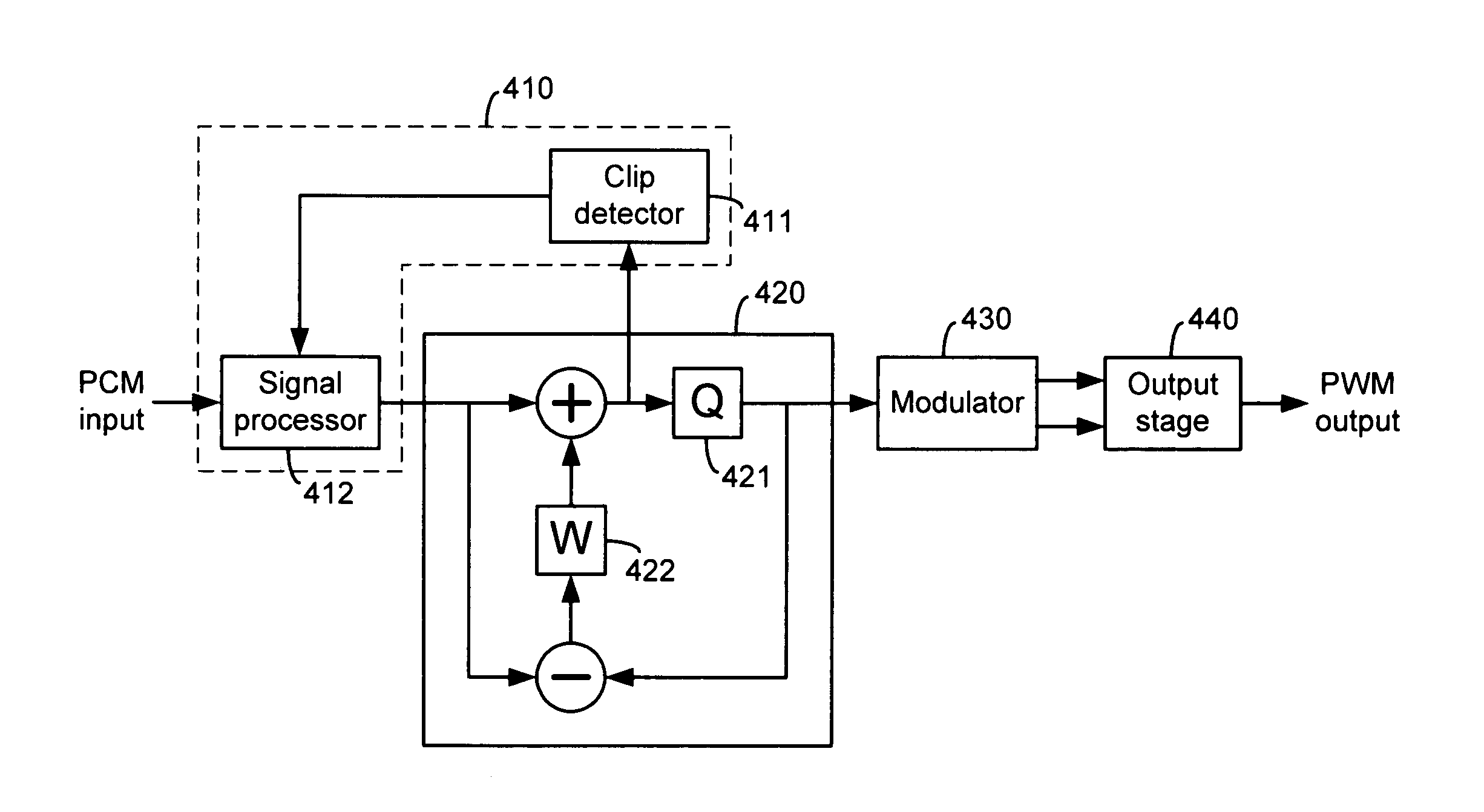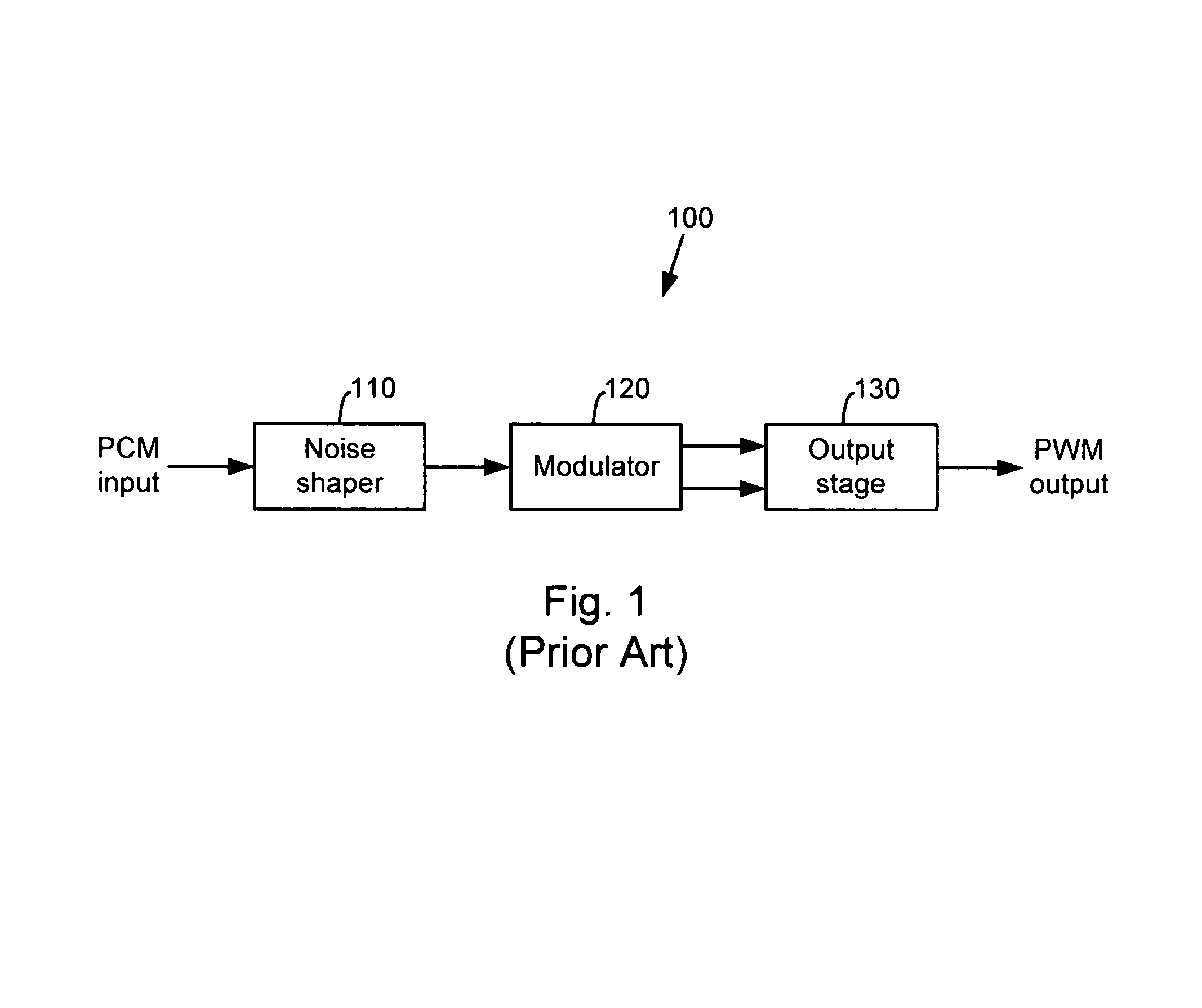Clip detection in PWM amplifier
a technology of amplifiers and clips, applied in the direction of digital/coded signal control, instruments, code conversion, etc., can solve the problems of low performance applications, complex and costly applications to implement, and the solution is not widely accepted, and achieves the effect of stable feedback signals
- Summary
- Abstract
- Description
- Claims
- Application Information
AI Technical Summary
Benefits of technology
Problems solved by technology
Method used
Image
Examples
Embodiment Construction
[0025]One or more embodiments of the invention are described below. It should be noted that these and any other embodiments described below are exemplary and are intended to be illustrative of the invention rather than limiting.
[0026]As described herein, various embodiments of the invention comprise systems and methods for detecting clipping conditions in an audio signal and processing the signal to reduce the clipping conditions.
[0027]One embodiment of the invention comprises a system for reducing some of the problems of prior art systems, where, instead of clipping the input audio signal at a fixed level, the input audio signal is processed in a variable manner. For instance, at some times, the input audio signal may be clipped, at other times the input audio signal may be compressed, and at still other times the input audio signal may not be modified at all. In one embodiment, the system includes a noise shaper, a modulator, an output stage and several additional components. Thes...
PUM
 Login to View More
Login to View More Abstract
Description
Claims
Application Information
 Login to View More
Login to View More - R&D
- Intellectual Property
- Life Sciences
- Materials
- Tech Scout
- Unparalleled Data Quality
- Higher Quality Content
- 60% Fewer Hallucinations
Browse by: Latest US Patents, China's latest patents, Technical Efficacy Thesaurus, Application Domain, Technology Topic, Popular Technical Reports.
© 2025 PatSnap. All rights reserved.Legal|Privacy policy|Modern Slavery Act Transparency Statement|Sitemap|About US| Contact US: help@patsnap.com



